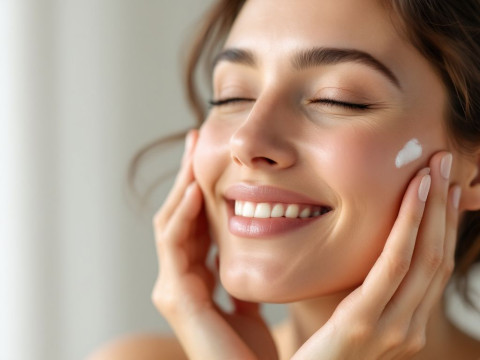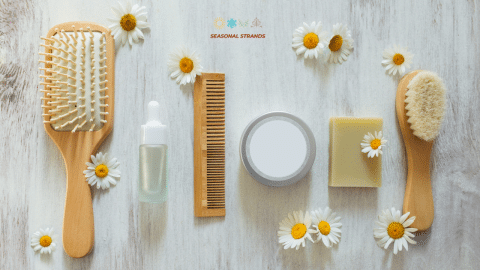Summer’s golden rays might bring to mind warmth, beaches, and iced beverages. Yet, one less charming companion tags along — summer hair damage. Whether it’s the sun-kissed highlights that turn brassy or the silky strands morphing into dry frizz, many have a personal transformation tale waiting to be told. Here, we unfold the intricate journey of understanding, managing, and mastering the art of rejuvenating summer-damaged hair.
The Personal Journey: Unraveling the Knot of Emotional Hair Stories
As someone who has journeyed through the lows of breakage and the highs of revival, my experience is classic yet unique. Each strand of hair tells its own story — a narrative intertwined with emotions, adventures, and lessons learned. Many have treated their hair as an extension of identity, where changes reflect personal growth and healing.
For instance, Mia, a digital marketer in her mid-30s, shared her summer transformation story that resonates with many women today. Late nights out during vacations, windswept beach parties, and poolside lounging left her natural curls parched and prone to split ends. Her hair, previously a source of pride and identity, became a stress point until she decided to reclaim its vitality.
Understanding Summer Hair Damage: The Science Behind the Strands 🌞
Summer hair damage manifests in several forms, driven predominantly by environmental factors like UV exposure, chlorine, and saltwater. It’s crucial to comprehend how these agents interact with hair on a molecular level to craft effective strategies for repair.
The Culprits of Summer Hair Damage
- Ultraviolet (UV) Radiation: Hair, much like skin, is susceptible to damage from UV rays. UVC exposure, in particular, leads to hair protein degradation, weakening the structural integrity.
- Chlorine and Saltwater: Chlorine strips natural oils from hair, contributing to dryness and breakage. Saltwater exerts an osmotic effect, which draws moisture out, leading to frizz and tangles.
- Heat and Humidity: Summer heat opens up the cuticles, making hair porous and prone to losing moisture, while humidity causes hydrogen bonding, leading to frizz.
Real-World Studies and Insights

A study published in the **Journal of Cosmetic Science** identified that UV exposure can reduce protein content in the hair by approximately 5-10%, demonstrating the tangible effects of prolonged sun exposure. Furthermore, a cross-sectional analysis demonstrated that participants who swam frequently during summer reported 30% more split ends than those who didn’t swim.
Repair and Revival: Strategies, Techniques, and Realism 🛠️
Healing summer-damaged hair involves multifaceted efforts focusing on hydration, nourishment, and protection. Let’s look at some approaches endorsed by trichologists and haircare professionals.
Hydration is Key: The Foundation of Hair Revival
Hydration begins from the inside out. Ensure you’re consuming adequate water daily to replenish and hydrate from within. For your hair:
- Deep Conditioning Treatments: Utilize nourishing masks rich in oils like argan or coconut, which penetrate the hair shaft, restoring moisture and flexibility.
- Leave-In Conditioners: These protect the hair from external stressors while offering ongoing moisture.
**Pro Tip:** Consider a DIY approach using avocado, honey, and olive oil as a natural mask, loaded with essential fatty acids and antioxidants — a combination proven to enhance hair elasticity.
Crafting a Protection Shield

Protection in the scorching summer months involves quite literally shielding your hair:
- Wide-Brimmed Hats and Scarves: These act as physical barriers, significantly reducing UV exposure.
- SPF Hair Products: Apply specially formulated hair sunscreen sprays and serums. A study from **Kosmetica journal highlighted that a combination of synthetic UV filters and natural oils in hair sprays effectively mitigated UV damage.
Follow Industry-Standard Practices
- Trimming Timely: Regular trims prevent split ends from migrating up the hair shaft. Consider a 6-8 week schedule for maintenance.
- Smart Styling Techniques: Opt for air-drying instead of heat styling when possible. For those who must use hot tools, incorporate heat protectant sprays.
- Chemical Balance: If frequenting the pool, rinse your hair immediately with clean water post-swim to minimize chlorine exposure.
Case Studies: Embracing Change Through Technical Insights 🌟
To bolster your summer hair damage recovery journey, let’s explore some real case studies.
Case Study 1: Amelia’s Bounce Back to Curls
Amelia, a yoga instructor, approached her haircare dilemma with holistic routines. She transitioned to sulfate-free shampoos enriched with tea tree oil, known for its antifungal and antibacterial properties, effectively soothing her irritated scalp and encouraging curl formation. Complemented by weekly coconut oil hair massages, she saw considerable improvement in curl retention and elasticity.

Case Study 2: James’ Journey into Hair-Health Literacy
James decided to utilize the summer downtime to delve deeper into understanding hair protein science. Recognizing keratin’s role, he adopted sericin-infused treatments. Sericin, a silk protein, fortifies keratin, plumping each strand and reducing breakage significantly. His learnings were reinforced by a peer-reviewed analysis in the **International Journal of Cosmetic Science**, showcasing sericin’s superiority in maintaining cuticular integrity under UV stress.
Healing Beyond Hair: The Emotional Tapestry of Rebuilding
As shown through these personal narratives and technical insights, recovering from summer hair damage is not merely a cosmetic pursuit but an emotional journey of regaining control and self-esteem.
Emotional Rebirth Through Hair Health
For many, the tactile process of engaging in nurturing hair rituals offers therapeutic mindfulness. The focus shifts to self-love and acceptance, creating a positive emotional impact amidst the healing touch of effective solutions.
Hair rehabilitation is intertwined with personal transformation, aligning with emerging wellness paradigms where personal care signifies broader self-care engagement.
Conclusion: From Breakage to Beauty
The journey from breakage to beauty, though unique for everyone, encompasses a shared understanding of summer’s dual-edged allure. As this guide has elucidated, employing research-backed strategies equips you not only to restore hair health but renew your connection with your personal lived narrative.
By anchoring summer hair damage recovery efforts in science, embracing technical richness, and acknowledging the intrinsic emotional ties, the transformation goes beyond physical touchpoints — it’s an embrace of a broader metaphor for resilience and rebirth.
Remember, with informed choices and persistent care, what was once perceived as untamable damage can be an opportunity to emerge beautifully renewed, preparing fortified tresses for another tale under the sun’s golden gaze. 🌅✨
Frequently Asked Questions
What are the benefits of using a hair mask in my hair care routine?
Using a hair mask can provide several benefits, including hydration, smoothing, strengthening, curl definition, heat protection, and damage repair. Hair masks infuse the hair with moisture, help coat the hair shaft to seal split ends, reduce breakage, and protect the hair from heat styling and environmental damage[1][4].
What ingredients should I look for in a hair mask?
Effective hair masks often include ingredients such as coconut oil, argan oil, shea butter, honey, avocado oil, green tea, and coconut water. These ingredients provide nourishment, moisturize, and protect the hair, offering benefits like softening, moisturizing, and protecting against damage[2][5].
How often should I use a hair mask in my routine?
You should use a hair mask whenever your hair feels dry, unmanageable, or in need of intense hydration. This can vary depending on your hair type and needs, but generally, using a hair mask once or twice a week can help maintain healthy and moisturized hair[1][4].
How do I apply a hair mask for the best results?
To apply a hair mask effectively, shampoo your hair first, then apply the mask, focusing especially on the ends where hair tends to be the most damaged. Leave the mask on for anywhere from 10 minutes to overnight, depending on the type of mask and your hair’s needs[1][4].
References










